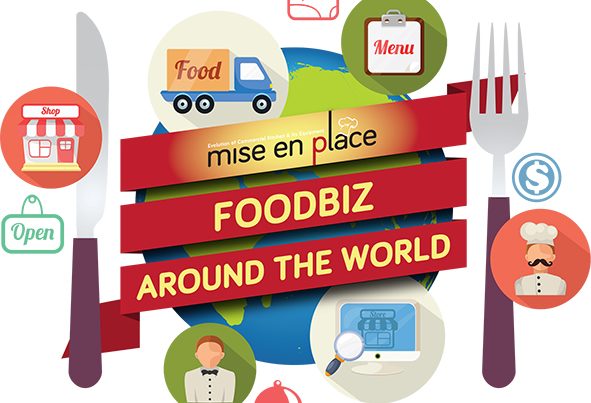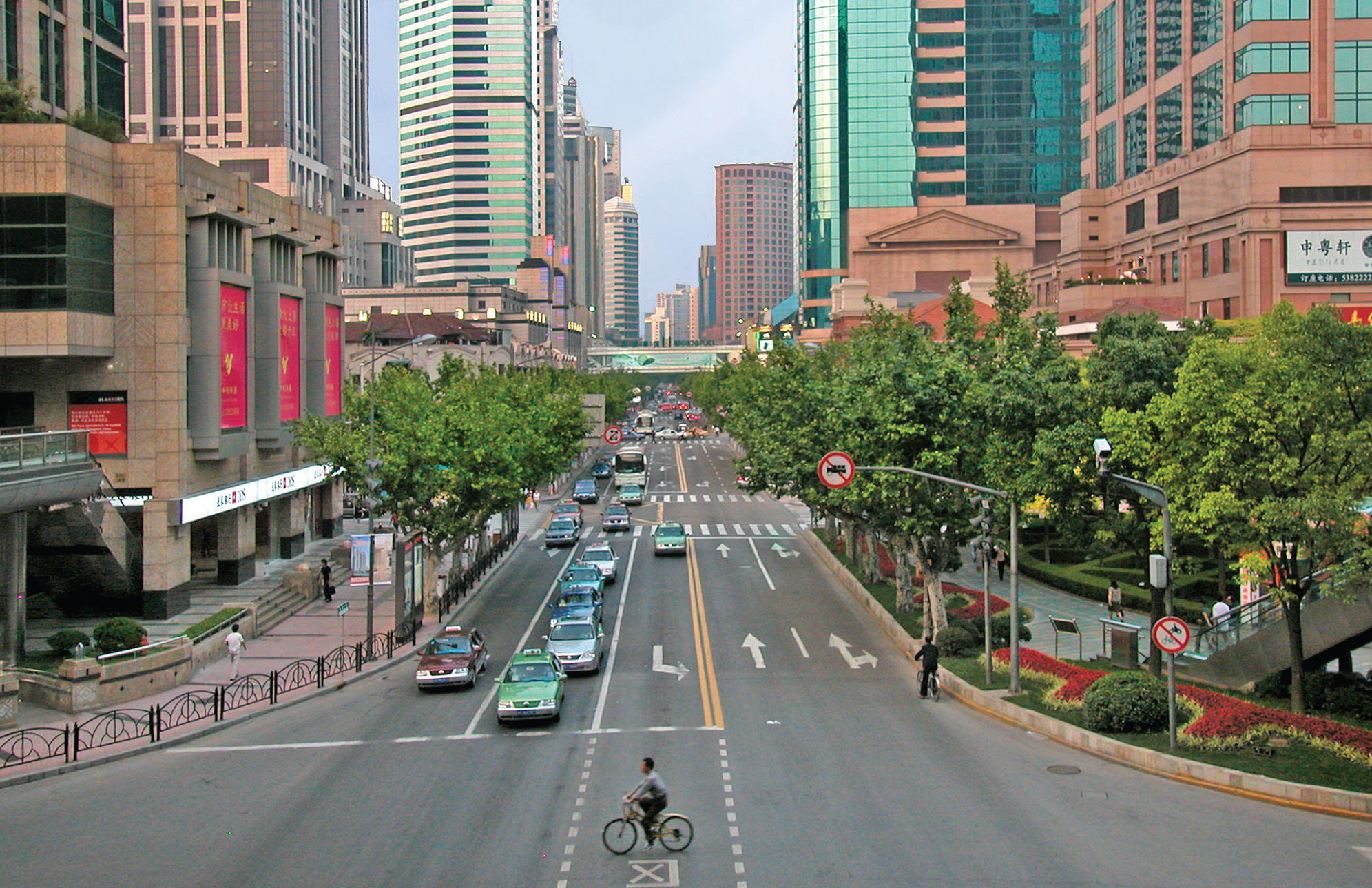
In the last issue, we covered North China as one of the two mega-regions in China. Due to the country’s enormous size and vast lands, we will focus on South China in this issue of Mise En Place magazine. Let’s get started!
THE COMMERCIAL SOUTH
Located to the south of the Qinling Huaihe Line (a line used to distinguish between Northern and Southern China), South China boasts a warmer climate than North China, with its lush mountains cut by river valleys. For a large part of Chinese history, Northern China was economically more advanced than Southern China. However, when the Jurchen and Mongol invasion took place, the Emperor shifted the Song dynasty capital city from Kaifeng in Northern China to Hangzhou, in the South, resulting in a massive migration to southern China. The population of Shanghai then increased from 12,000 households to over 250,000 inhabitants after Kaifeng was ransacked by invading armies. This led to a shift of political, economic and cultural power from northern China to southern China. The east coast of southern China became a leading economic and cultural centre of China until the Republic of China was formed. Today, Southern China remains economically more prosperous and commercialised than Northern China.
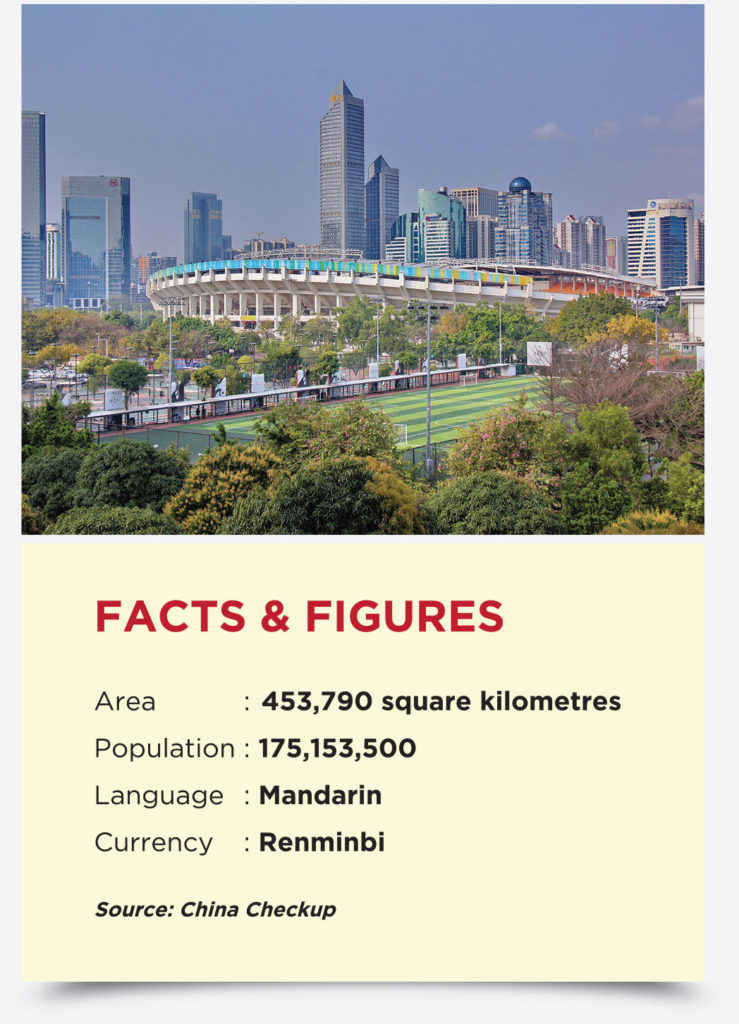
THE BIG CITIES
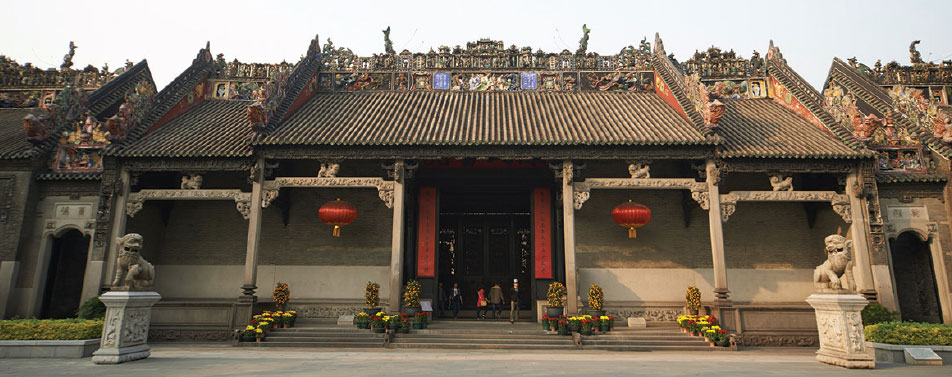
GUANGZHOU
Historically known as Canton or Kwangchow, Guangzhou is the largest city and capital of China’s Guangdong province. Located on the Pearl River approximately 120 kilometers northwest of Hong Kong, the city is one of five National Central Cities and a major international hub. It is also the third largest city in China and the largest in the southern part of the country. The current 2016 population of Guangzhou is estimated to be over 13,000,000. As one of the most prosperous cities in mainland China, there are many must-see sights for visitors to check out:
• Canton Tower, Yuejiang W Rd, Haizhu Qu, Guangzhou Shi, Guangdong Sheng, China
• Yuexiu Park, No. 960 Jiefang Bei Lu, Yuexiu District, Guangzhou City, Guangdong Province
• Ancestral Temple Of The Chen Family, No.34, Enlong Lane, 1St Zhongshan Road, Guangzhou City, Guangdong Province.
• Qingping Market, Qingping Road, Liwan, Guangzhou, Guangdong, China
• Pearl River Cruise, Tianzi Wharf, Yanjiang Middle Road, Taikang Street
SHENZHEN
Named by the Chinese government as an Excellent Tourist City, Shenzhen is a popular vacation destination with its beautiful sandy beaches and historic relics including Dapeng Fortress and Nantou Ancient City. It is also often referred to as the cultural and economic hub of southern China due to its innovation across multiple sectors. To add to its appeal, Shenzhen has a rich cultural history and organises thousands of cultural performances for the public annually. If you are heading to this beautiful city, be sure to also visit:
• Sea World, Shekou, Nanshan, Shenzhen, China, 518067
• Shenzhen Museum, Caiwuwei, Futian Qu, Shenzhen Shi, Guangdong Sheng, China, 518040
• Window Of The World, 9037 Shennan Ave, Huaqiaocheng, Nanshan Qu, Shenzhen Shi, Guangdong Sheng, China, 518053
• Dafen Oil Painting Village, Longgang, Shenzhen, China, 511700
• Nanshan Park, No.8 Shekou Villa, Nanshan District, Shenzhen, China

SHANGHAI
Situated on the estuary of the Yangtze River, Shanghai is a renowned international metropolis that serves as the most influential economic, financial, international trade, and cultural centre in South East China. The city is also a popular travel destination for visitors to sense the pulsating development of the country. While, the Shanghai skyline is drawn together by new skyscrapers and old Shikumen, Western customs intertwine with Chinese traditions, forming the city’s culture, and thus making a visitor’s stay in this city memorable. To embrace some of its culture and attractions, do visit:
• Yu Garden, 218 Anren St, Huangpu Qu, Shanghai Shi, China, 200000
• Jade Buddha Temple, 170 Anyuan Rd, Jing’an, Shanghai, China, 200060
• Shanghai Disneyland Park, Shanghai Disney Resort, Pudong, Shanghai, China
• The Bund Shanghai, Zhongshan East 1St Rd, Waitan, Huangpu Qu, Shanghai Shi, China, 200000 • Shanghai Museum, 201 Ren Min Da Dao, Shanghai, China
HAIKOU
Haikou is the capital of the Hainan Province, the second largest island in China. It is the provincial administrative centre of Hainan as well the focus of the local economy, culture and transportation. Situated at the northern end of Hainan Island, on the west bank of the Nandu River estuary, Haikou is appropriately named ‘Mouth of the Sea’. With the sea on three sides, Haikou enjoys a long coastline that features excellent bathing beaches and seaside resorts as well as a number of important sites of historical interest, including:
• Temple Of Five Lords, Haifu Rd, Qiongshan Qu, Haikou Shi, Hainan Sheng, China, 571100
• Tomb Of Hai Rui, 39 Qiuhai Ave, Longhua District, Haikou City, Hainan Island, China
• Movie Town, No.1 Mission Hills Boulevard, Haikou City, Hainan Island, China
• Mei She Lava Village And Hainan Crater Park, Haikou Volcanic Cluster Geopark, Shishan Town, Xiuying District, Haikou City, Hainan Island, China
• Xixiu Beach Park, Binhai Ave, Xiuying Qu, Haikou Shi, Hainan Sheng, China

NANNING
As the capital city of the Guangxi Zhuang Autonomous Region, Nanning is the political, economic and cultural center of this province. It has the most prosperous economy in Southwest China, and thus, supplies an abundance of agricultural products to the whole Guangxi. Its pleasant climate endows Nanning with evergreen trees and fragrant flowers all year round, hence the name ‘Green City.’ Nanning attracts visitors from all over the world for years with its beautiful subtropical scenery and exotic ethnic minority culture.
• Detian Waterfall, Detian Village, Shuolong Town, Daxin County 532314, China
• Guangxi Ethnic Relics Centre, No.21-6, Gucheng Road, Qingxiu District, Nanning, Guangxi
• Qingxiu Mountain, Yongjiang River’s Riverside, Qingxiu District, Nanning 530000, China
• Nanning Zhongshan Snack Street, Address: Zhongshan Road, Nanning, China
• Yiling Cave, Wuming, Nanning, Guangxi, China
KOWLOON
Located at the northern part of the Special Administrative Region of Hong Kong and encircled by Victoria Harbor on three sides, Kowloon is an essential part of this region. The most attractive business area is the south with its abundant shopping centres, entertainment areas and restaurants. To the east and west are industrial areas and to the north is predominantly residential. Kowloon is home to some of the most densely populated neighbourhoods not only in Hong Kong but on the planet. Very much a working class part of Hong Kong, the streets of Kowloon bulge with hawkers, markets and the best Cantonese food in the world. When wandering through Kowloon, here are some notable places that deserve a visit:
• Temple Street Night Market, Temple Street, Yau Ma Tei, Kowloon
• Lei Cheng Uk Han Tomb Museum, 41 Tonkin Street, Sham Shui Po, Kowloon
• Hong Kong Museum Of Art, 10 Salisbury Rd, Kowloon
• Hong Kong Heritage Discovery Centre, Kowloon Park, Haiphong Road, Tsim Sha Tsui, Kowloon
• Jade Market And Jade Street, Junction Of Kansu Street And Battery Street, Yau Ma Tei, Kowloon
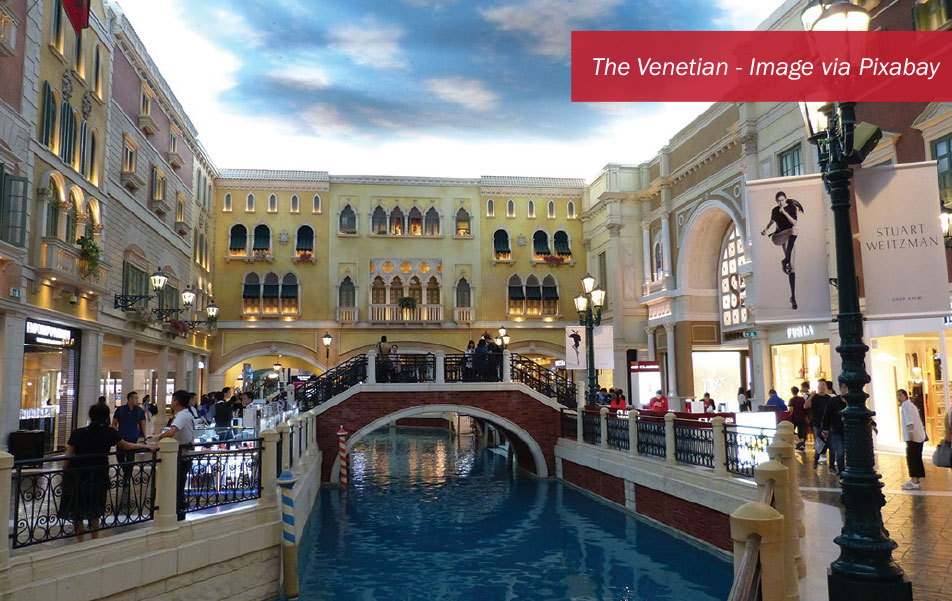
MACAU
Known as the ‘Vegas of China’, Macau is the Mecca of glitz and gambling. Located on the southeast coast of China, this special administrative region of the country offers a variety of both Oriental and Western cultural and historical places of interest and all sorts of old buildings that are either European baroque or traditional Chinese in style. A wander around this Peninsular will bring you into a world of antiques and fashion, traditional and modern, as well as tranquility and glamour. To experience Macau’s finest, head to:
• Ruins Of St Paul, St. Paul’s Road (Rua De Sao Paulo, Macau
• Senado Square, Largo Do Senado, Macau
• The Venetian, S/N Estrada Da Baia De Nossa Senhora Da Esperanca, Macau
• A-Ma Temple, Barra Square, Rua De Sao Tiago De Barra And Calcada Da Barra, Macau • Macau Tower Skywalk, South Bay New Reclamation Area, Macau
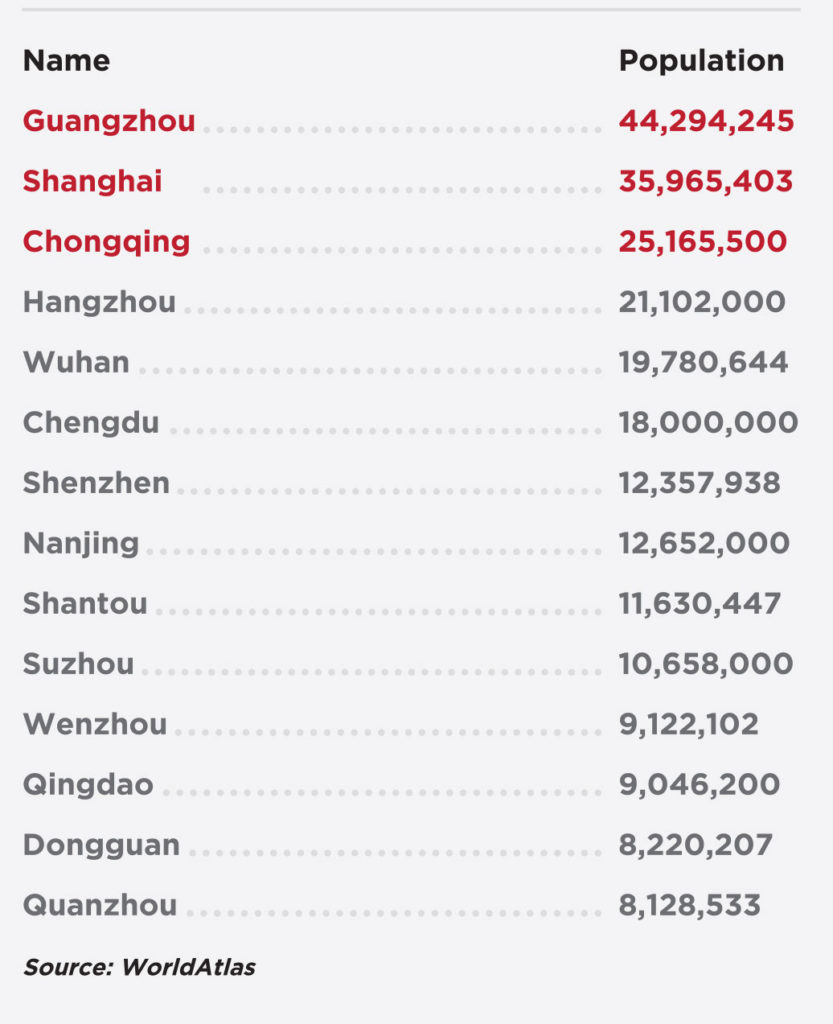
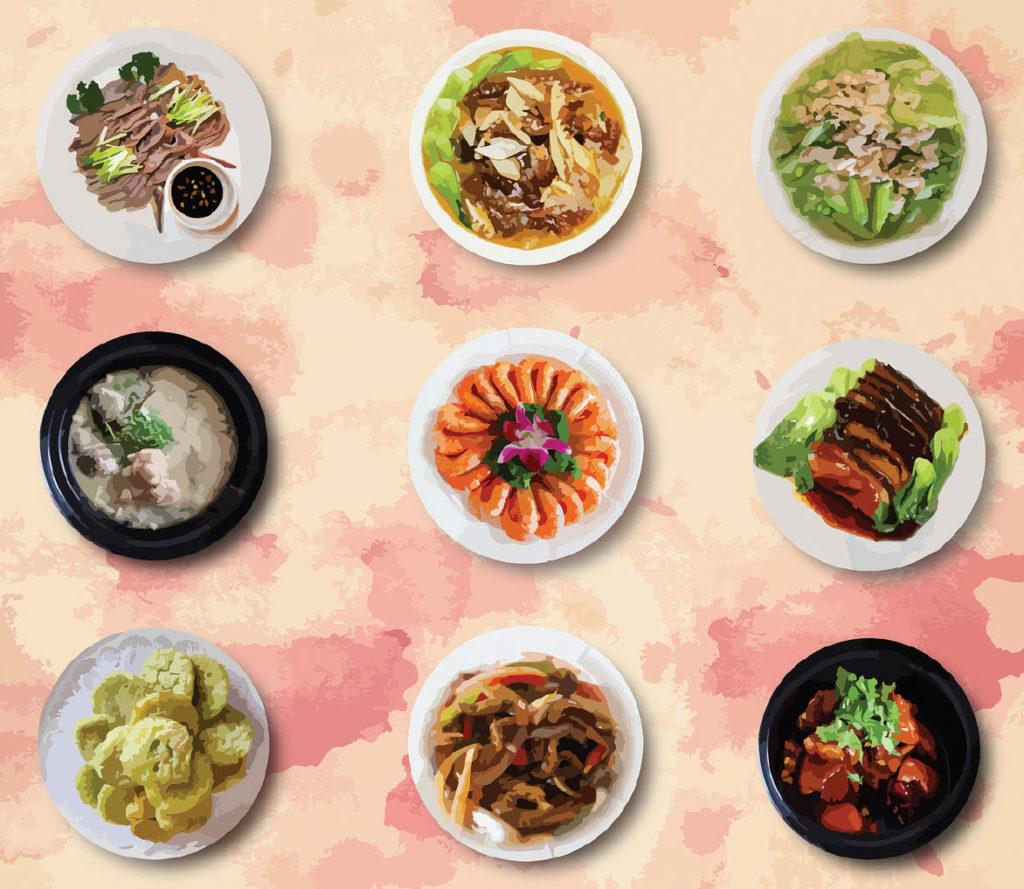
FOOD IN SOUTH CHINA
Each region in China has its own unique food profile and range of tastes; the southern region of China is no different. Depending on which Southern region you visit, the food can be described as sweet and light, or sour or spicy with a lot of seasoning. To categorise it even further, Southern Chinese cuisine can be broken down into eight distinct groups; Cantonese cuisine, Fujian cuisine, Zhejiang cuisine, Anhui cuisine, Jiangsu cuisine, Sichuan cuisine, Hunan cuisine, and Southern Minority cuisine.
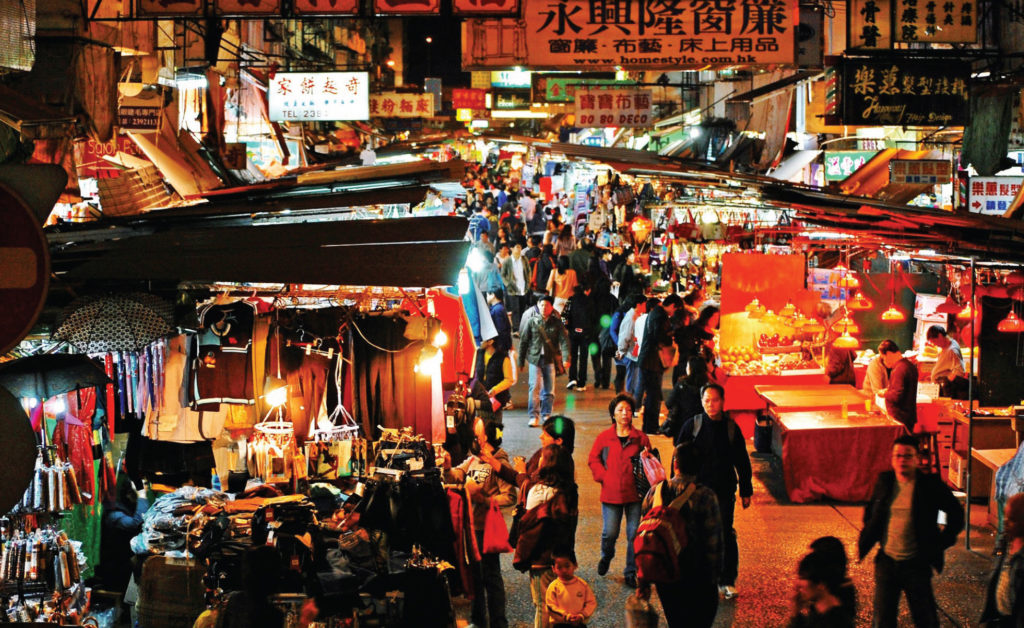
Street Markets
Street markets, which are so commonly associated with Chinese culture, are in full swing during the weekends in South China. You can find a wide array of items available for sale at these street markets that seem to almost pop up out of nowhere such as, jade jewellery, bronze Buddhas, marble Maos among many other trinkets, antiques and art items. In most of these markets, there are individual spaces dedicated to specific items:
• South Bund Soft Spinning Material Market (Opens: 9:00 AM – 6:00 PM)
• Flower Market Road (Opens: 7.00 AM – 7.00 PM)
• Shanghai’s Hongqiao Pearl Market (Opens: 12:00 AM – 12:00 AM)
• Temple Street Night Market (Opens: 4:00 PM – 11:00 PM)
• Qingping Medicine Market (Opens: 12:00 AM – 12:00 AM)
Local Offerings
From dishes from Southern regions that are sweet and light to sour and spicy, Southern Chinese cuisines are a smorgasbord of taste and flavour. Some notable ones include:
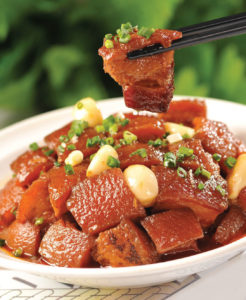 Dongpo Pork – This Hangzhou dish is essentially pork belly that is first pan-fried and then goes through red cooking. The pork is cut thick, about 2 inches square, and should consist equally of fat and lean meat. The skin is left on. A mouthful of Dongpo pork is oily but not greasy and the dish is fragrant with wine. The dish is named after the famed Song Dynasty poet and gastronome Su Dongpo.
Dongpo Pork – This Hangzhou dish is essentially pork belly that is first pan-fried and then goes through red cooking. The pork is cut thick, about 2 inches square, and should consist equally of fat and lean meat. The skin is left on. A mouthful of Dongpo pork is oily but not greasy and the dish is fragrant with wine. The dish is named after the famed Song Dynasty poet and gastronome Su Dongpo.
Shanghai Xun Yu – Translated to mean Smoked Fish, this Shanghai style crispy fish is not actually smoked in the usual sense, as the “smoking” process takes place in the sauce. The preparation of it implies “bathing” the finely fried fish in a sweet and mouthwatering brown sauce. This dish is characterized by a somewhat peppery and salty taste and is commonly served warm in Shanghai restaurants, thus enriching the aroma of this dish.
Dong’an Chicken – This is a very popular dish in Wuhan and can be found at most restaurants, snack bars, street stalls and vendors. The chicken is cooked in rice vinegar, ginger and has a hot and spicy taste with an appetizing flavour; it is so delicious that it has joined the list of most extraordinary Xiang food in China. Dong An Chicken is served hot, usually complemented with a side dish or alone for those who don’t want to mix the tastes and aromas of this meaty, spicy food.
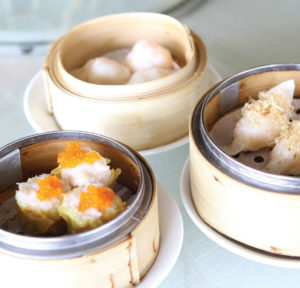 Dim Sum – Offered in small individual portions of 2 to 4 pieces, this Cantonese dish is usually served in a small steamer basket or on a small plate. Traditional dim sum includes various types of steamed buns such as cha siu bao (barbecue-pork-filled bun), dumplings and rice noodle rolls (cheong fun), which contain a range of ingredients, including beef, chicken, pork, prawns and vegetarian options. Dim sum can be cooked by steaming and frying, among other methods.
Dim Sum – Offered in small individual portions of 2 to 4 pieces, this Cantonese dish is usually served in a small steamer basket or on a small plate. Traditional dim sum includes various types of steamed buns such as cha siu bao (barbecue-pork-filled bun), dumplings and rice noodle rolls (cheong fun), which contain a range of ingredients, including beef, chicken, pork, prawns and vegetarian options. Dim sum can be cooked by steaming and frying, among other methods.
Sichuan Hotpot – As one of the most popular meals in China, Sichuan hotpot or fondue is famous for its numbing and spicy flavour, resulting from a special seasoning – Sichuan pepper – and other spicy ingredients like chilli that is added to it. It consists of a simmering metal pot with broth at the centre of a table, and all raw ingredients like meats and vegetables placed beside the metal pot, so that people can add and cook whatever they like in the broth. If you want to challenge your taste buds, Sichuan hot pot is highly recommended.
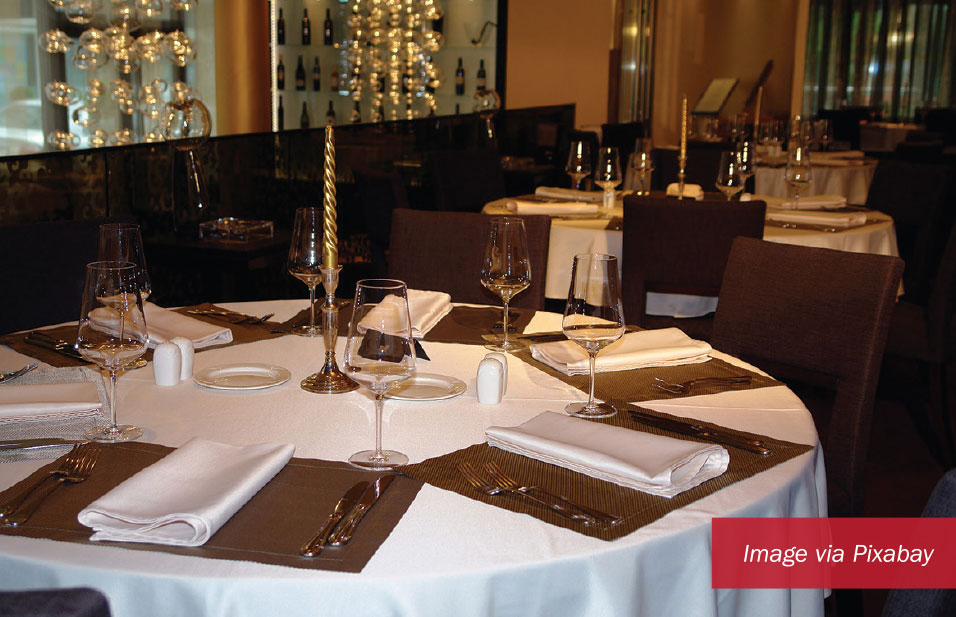
Fine Dining
Chinese cuisine is possibly one of the most popular cuisines in the world and has made it way into homes and restaurants around the globe effortlessly. However, to really relish the crème de la crème of Southern Chinese cuisine, you will need to visit some of the top South Chinese fine dining restaurants:
• Lanting Chinese Restaurant, No.39 Wangjiang East Road, Shangcheng District, Hangzhou, China
• Crystal Jade La Mian Xiao Long Bao, Suite 8F06, 168 Lujiazui Xi Lu, near Yincheng Zhong Lu, Pudong, Shanghai, China
• Asia Bistro, GongShu District HuShu South Road 28, JWWanHao Hotel 1 Floor Crossing of Miduqiao Road and Hushu South Road, Hangzhou 31006 China
• Lost Heaven, 38 Gaoyou Rd, Xuhui Qu, Shanghai Shi, China, 200000
• Le Buffet, The Parisian Macao, Estrada do Istmo, Lote 3, Cotai Strip, Macao SAR, P.R. China
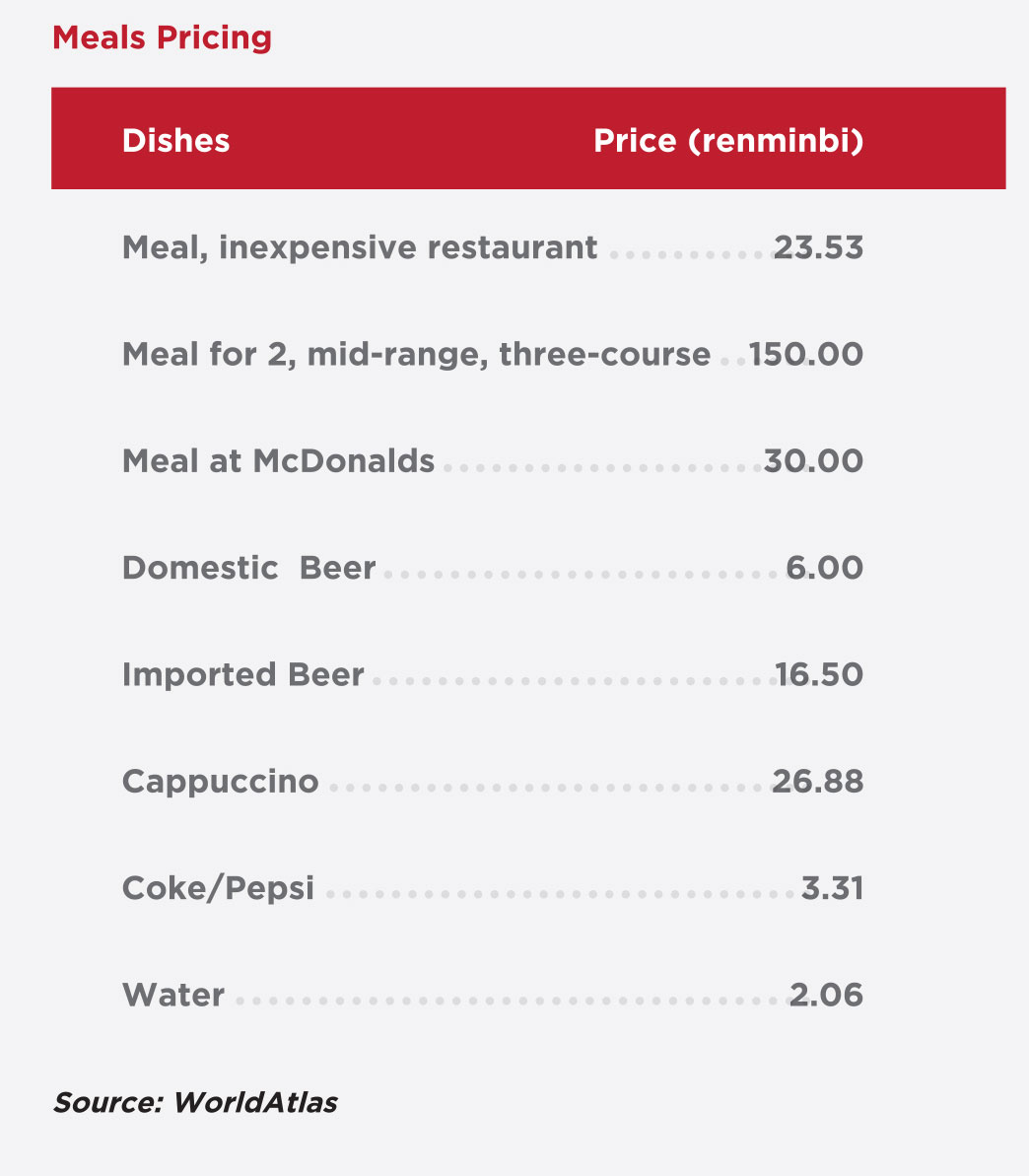
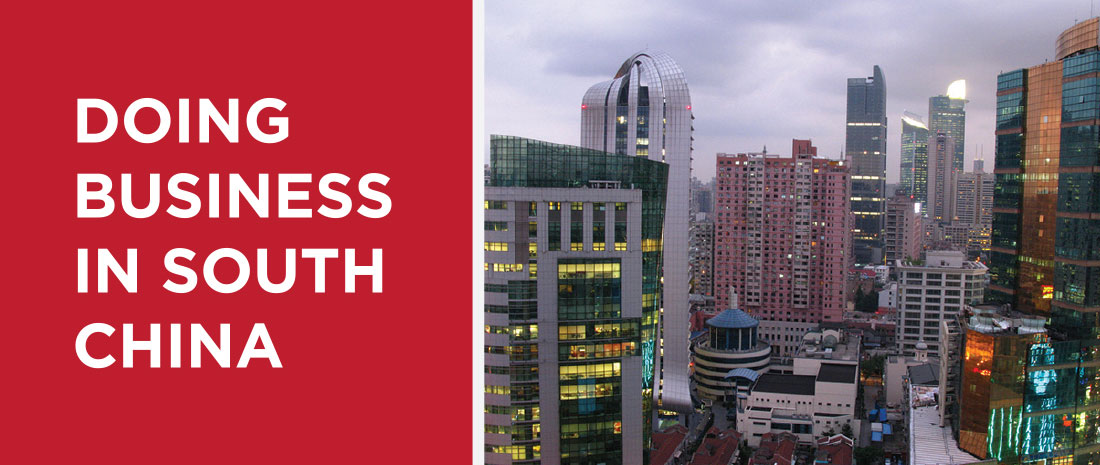
China, be it North or South, offers great opportunities to investors from all over the world. If you are thinking of starting a business in the Southern regions of China, you first need to know what business options are available for you there.
Forms of Business
As a foreign investor, you can establish a business presence in South China in one of five ways:
Wholly Foreign Owned Enterprise (WFOE) – a limited liability company that is wholly owned by the foreign investor(s). A WFOE requires registered capital and its liability is limited to its equity. It can generate income, pay tax in China and, its profit can be repatriated back to the investor’s home country.
Foreign Investor Partnership Enterprise (FIPE) – a new type of business entity in China that requires very little capital with minimum registered capital required. In a FIPE, 2 or more Foreign enterprises or individuals can establish a Partnership Enterprise (PE) in China or Foreign enterprise(s) or individual(s) can establish a PE with Chinese individuals or companies in China. Same as WFOE, FIPE can generate revenue, hire local and foreign staffs and enter into contracts with local and overseas businesses in China.
Representative Office (RO) – a liaison office of its parent company. It requires no registered capital. Its activities are limited to: product or service promotion, market research of parent company’s business, quality control or contact liaison in China. A RO is generally prohibited from generating any revenue and entering into contracts with local businesses in China
Representative Office (RO) – a liaison office of its parent company. It requires no registered capital. Its activities are limited to: product or service promotion, market research of parent company’s business, quality control or contact liaison in China. A RO is generally prohibited from generating any revenue and entering into contracts with local businesses in China
Joint Venture (JV) – a limited liability company formed between a Chinese company investor and a Foreign investor. The parties agree to create an entity by both contributing equity, and share in the revenues, expenses, and control of the enterprise. A JV is usually used by foreign investors to enter into the restricted industries such as education, entertainment, mining, hospital etc.
Hong Kong company – Hong Kong is one of the quickest locations to incorporate a business. Although a Hong Kong company is not a legal entity in Mainland China, many foreign investors, especially investors from Europe and North America choose to form a Hong Kong company as a Special Purpose Vehicle (SPV) to invest in China.
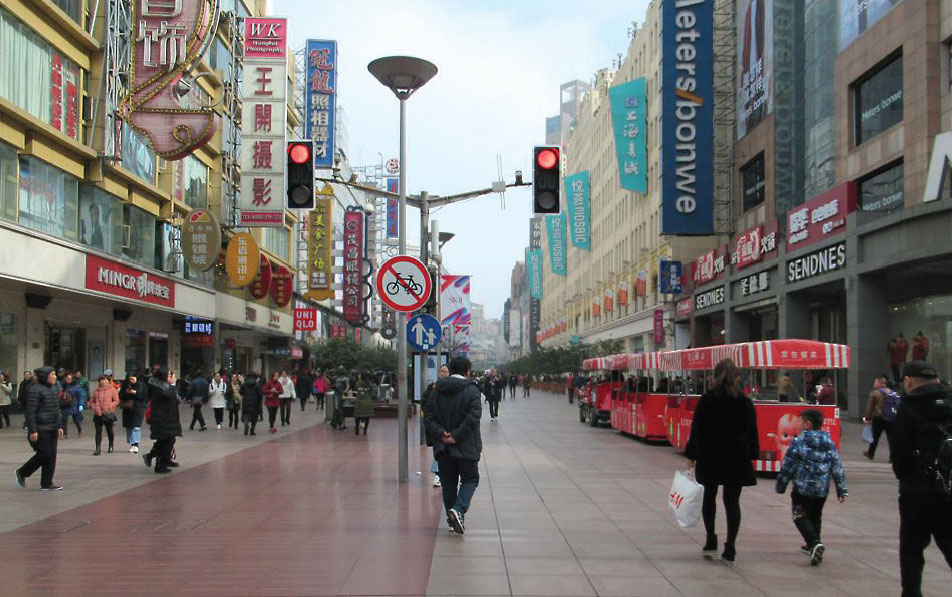
Requirements for Setting up a New Company
When setting up a new company in Southern China, there are a number of considerations to take into account; hence, it is advisable to seek appropriate legal advice. Once you have chosen a location and a Chinese company structure, it is important to carry out the following:
Develop A Business Plan
A detailed business plan is crucial because once the government approves it, you will only be able to operate within the business scope. However, this can also be changed if needed.
Organize The Necessary Documents
The documents you will need to register for a Company will vary from place to place but mostly it is just a few passports photocopies, a bank reference letter and company information.
Trademark Your Intellectual Property
Intellectual property violations can be an issue for foreign investors in China. The Chinese trademark registration system is based on a first come first serve basis. Hence, it is important to register your brand’s trademark and logo in China as early as possible. Having an international trademark is not helpful as foreign trademarks are not enforced in China.
Open A Bank Account
Due to existing restrictions on international money transfers in China, your mainland-based clients will only be able to pay you within China. Therefore, opening a bank account in South China where local companies can transfer you Chinese RMBs is necessary.
Apply For A Tax Invoice
Chinese companies put a lot of trust in the government and the Chinese legal system. Hence, they are very likely to inquire whether your company is registered in China. This is a way for them to establish the legitimacy of your business and to ensure that you can provide them with a tax invoice locally known as Fapiao.
Localise Your Marketing
Consider localising your marketing by using colours and slogans that appeal to Chinese consumers. Having a slogan in Chinese will also help Chinese customers gain a better understanding of the strength and appeal of your brand.
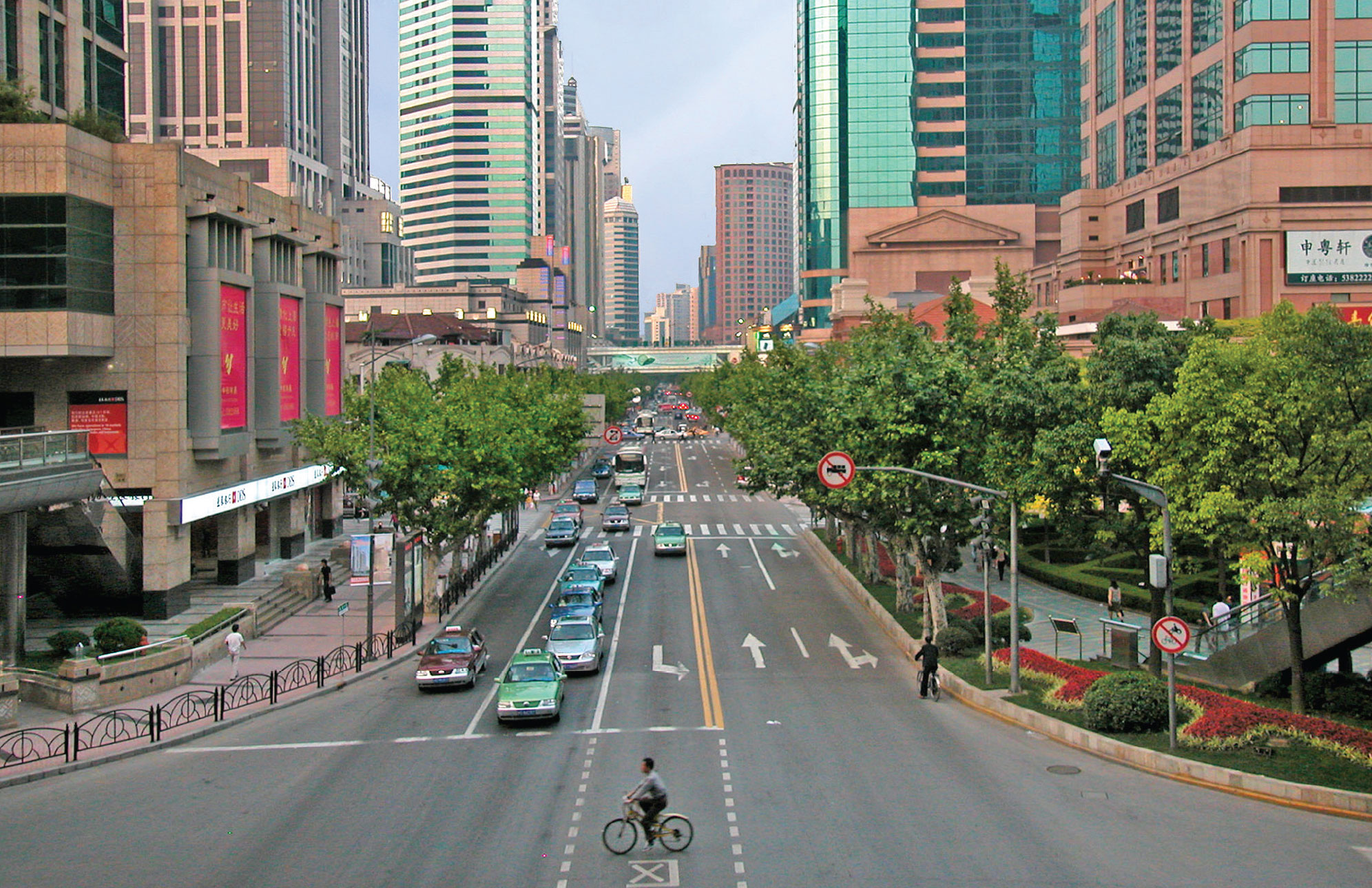
UPCOMING EVENTS
HI & FI ASIA-CHINA
Date : 19-21 Jun 2019
Venue : National Convention & Exhibition Centre, Shanghai
Find innovative ingredients and solutions for your business, network with leading industry professionals, and discover the latest trends with our variety of onsite features and product showcases. Hi & Fi Asia-China offers you access to the whole food and beverage production value chain, from raw ingredients to finished health food products. This is the only event of this scale in China, bringing exhibitors and visitors an extensive offering in health ingredients, food ingredients, nutraceuticals, supplements, natural ingredients, starch ingredients and packaging and processing solutions – all under one roof.
CHINA (GUANGZHOU) INTERNATIONAL FOOD EXHIBITION AND IMPORT FOOD EXHIBITION
Date : 26-28 Jun 2019
Venue : China Import and Export Fair (Canton Fair Complex), Guangzhou
Entering its 19th edition, China (Guangzhou) International Food Exhibition and Import Food Exhibition (IFE China) is the industrial base and import hub for food business in South China. IFE China is now the leading trade fair for food industry in South China. It is a must-attend platform for food professionals seeking to enter the South China market
MACHINERY AND EQUIPMENT EXHIBITION
Date : 26-28 June 2019
Venue : China Import and Export Fair (Canton Fair Complex), Guangzhou
This exhibition is an international trade fair for a food processing machinery, food packing, and food safe detecting instrument. This event shows products like bring manufacturers and suppliers of food packaging machinery and food processing equipment under one roof. By attending this expo these manufacturers and suppliers can share their knowledge and experience with each other.
LABEL & FLEXIBLE PACKAGING & FILM EXPO CHINA
Date : 10-12 Jul 2019
Venue : Shanghai New International Expo Centre (SNIEC), Shanghai
Blue Whale Expo has become the biggest exhibition of label and flexible package in the China. Its professional settings, display products, trade results and business services are highly valued in the industry. Label & Flexible Packaging & Film Expo China will be promoted again. The exhibition will contain end user in different industries, for example, food, medicine, cosmetic, personal care, electronic and so on. It will also extend to the end user. The organiser warmly welcome domestic and international exhibitors and visitors coming to the show.
INTERNATIONAL CONFERENCE ON FRESH CUT PRODUCE
Date : 12-17 Aug 2019
Venue : Taishan Blossom Hotel, Tai’an
International Conference on Fresh-cut Produce is an excellent opportunity for researchers, technicians, students and industry people to share their knowledge and experience on key issues and emerging technologies relevant to the dynamic and growing fresh-cut produce industry. The main topics will include: Quality & Product Development, Temperature & Atmosphere Management, Facility & Instrument, Food Pathogen & Chemical Hazards Control, and Marketing Status & Future Trends.
INTERNATIONAL SUGAR AND LIQUOR FOOD FAIR
Date : 02-04 Aug 2019
Venue : Nanjing International Exhibition Center, Nanjing
The International Sugar and Liquor Food Fair will attract famous enterprises from home and abroad to participate in the conference, and some enterprises have participated in many exhibitions. This is a platform and excellent opportunity to communicate with the distribution agent, a good opportunity to showcase new products and new technologies.
WORLD SEA FOOD SHANGHAI
Date : 28-30 Aug 2019
Venue : Shanghai New International Expo Centre (SNIEC), Shanghai
This event exhibits products such as Fresh, frozen, live, processed and value-added seafood and aquatic products, Fishing tools and etc.
CHINA INTERNATIONAL ORGANIC & GREEN FOOD INDUSTRY EXPO
Date : 28-30 Aug 2019 remind me
Venue : Shanghai New International Expo Centre (SNIEC), Shanghai
China International Organic & Green Food Industry Expo is the largest organic food industry Expo in China. It features a display of products such as Soybean oil &Cereals, Dehydrated food, Meat, Game, juice, Aquatic products, Canned foods, Pickled and dried fruits and products, Dried vegetables, Eggs, Dairy products, Edible oil, Sauce and Fruit products, Spices, drinks, Green agriculture, green agricultural products etc.







